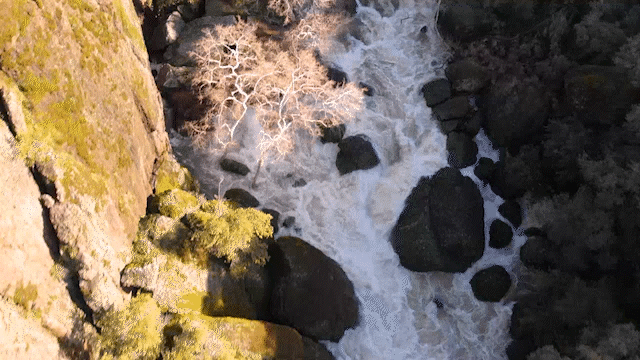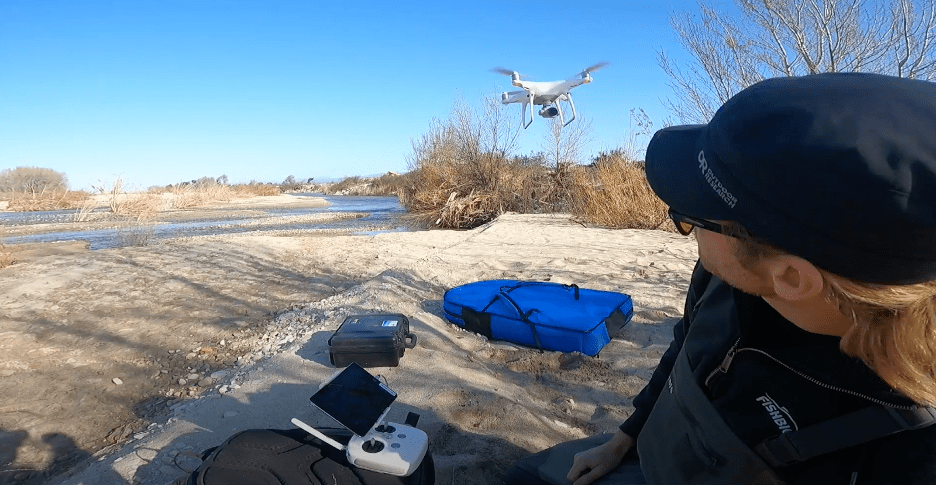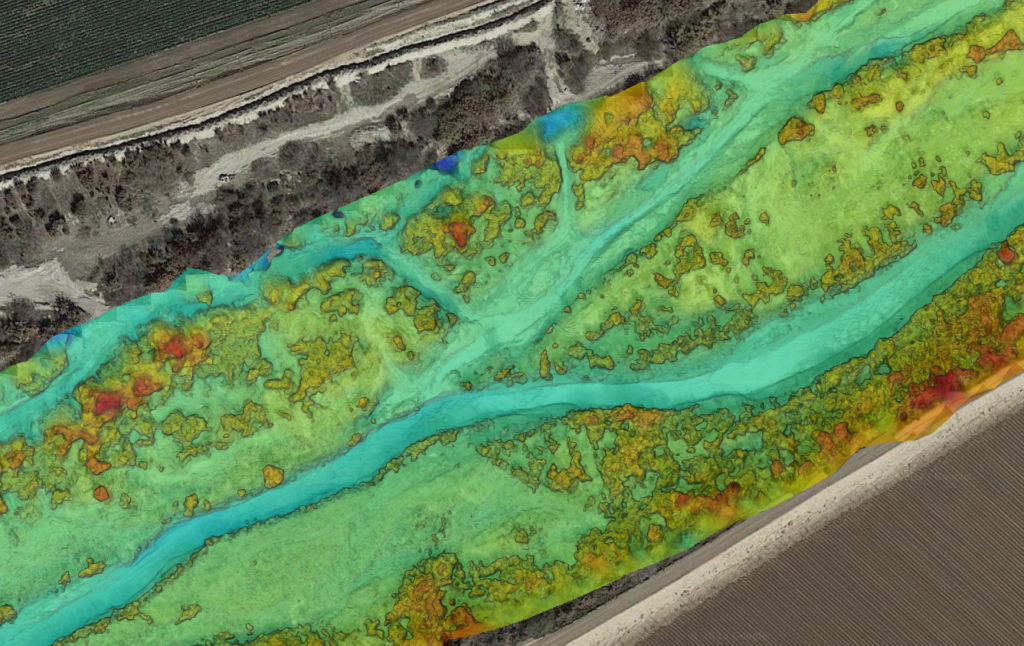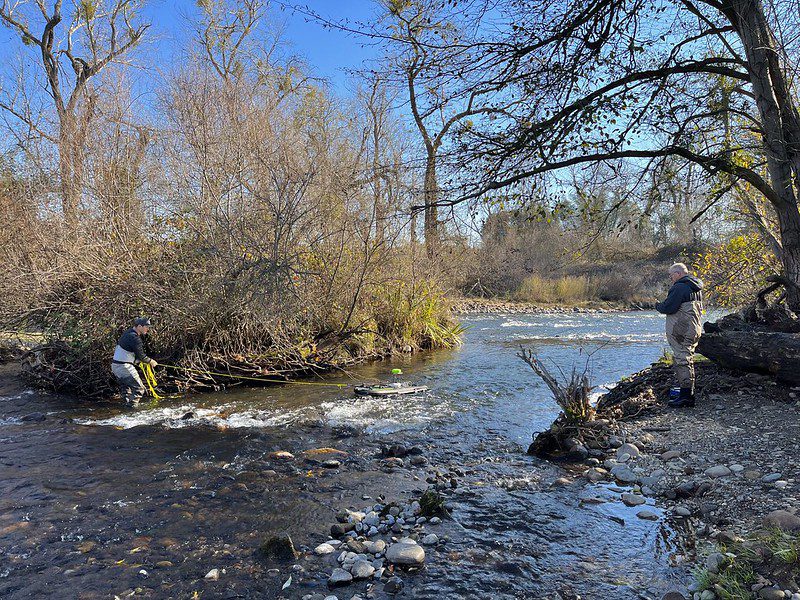Monday May 1, 2023

Over the last decade, rapid improvements in drone technology have led to the widespread use of these devices in many fields, including fisheries. From mapping riverbeds to monitoring salmon spawning, the potential applications of drones in fisheries research are diverse, and as these approaches are developed, FISHBIO’s FAA-certified drone pilots have been buzzing about with increasing frequency. As with any new technology, however, some trial and error is often necessary to develop novel applications for these flying machines. Most recently, our drone operators have been testing a new approach for evaluating the river flows necessary to allow passage for fish in coastal California watersheds.

Many coastal riverbeds are composed primarily of sand, and therefore their shape can change substantially from year to year. This means that monitoring river flow and depth relationships at a single riffle, or critically shallow area within a river, may not provide an accurate measurement of the overall river passage limitations. Therefore, by assessing flow-depth relationships across longer river reaches, scientists are able to characterize changes in riffles across seasons and years and create appropriate management strategies that provide suitable conditions for fish passage. However, obtaining this data through traditional field surveys is challenging, time-consuming, and can be costly. To speed things up, FISHBIO has piloted a methodology involving the use of a drone to create digital elevation models (DEMs) of the riverbed. These elevation data can then be incorporated into models that use hydrological equations to estimate water depth across various levels of flow within a river. To obtain these DEMs, FISHBIO biologists have conducted repeated drone surveys of river reaches before and after large flow events, and an analysis of the collected data was performed to evaluate the feasibility of using drone-derived models to estimate the minimum flows necessary to allow fish passage in the system.

The model was tested in multiple locations to explore the kinds of data that this drone-based methodology can provide, and how it might be improved. Following the initial data collection, FISHBIO scientists recognized the need for more precise measurements to estimate critical flow thresholds accurately. To improve the accuracy of the drone’s altitude measurements, a Trimble GPS system was used and surveys were done to incorporate Ground Control Points (GCPs). Following these improvements, model testing indicated that the methodology is very sensitive to model inputs, such as river channel elevation and slope, so collecting precise data from the field is necessary. When used strategically, drones can provide accurate and precise measurements to inform these model inputs.

To validate the accuracy of the model and ground truth the outputs over a variety of flow levels, FISHBIO conducted field surveys at the same sites with an Acoustic Doppler Current Profiler (ADCP). So far, the model, when compared to the data collected by the ADCP, has shown good agreement with the field data, suggesting that the model is providing realistic estimates of depth at varying flows. Once the model outputs are confidently validated, drone surveys can be expanded to assess efficient fish passage across much larger spatial scales without the need for intensive field efforts on the ground.
The potential value for drone photogrammetry to develop accurate flow-depth models is significant, and the collection and archiving of drone-created maps provide additional value for management. The dynamic nature of coastal California rivers combined with the high degree of human disturbance in some systems suggests that routine monitoring of the riverbed to verify previously identified critical riffles are still present – as well as to detect newly formed riffles – is warranted. Drones can rapidly and inexpensively produce high-resolution maps for key reaches of the river, allowing for comparison between seasons and years. New approaches for drone-based monitoring are still being discovered every day, and FISHBIO’s pilots are excited to be flying at the forefront of this new technology.
This post was featured in our weekly e-newsletter, the Fish Report. You can subscribe to the Fish Report here.
